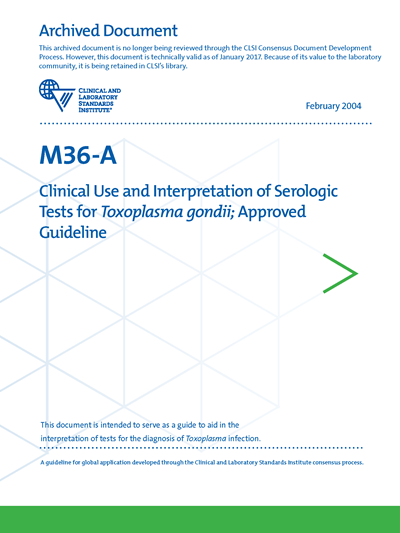CLSI M36
Clinical Use and Interpretation of Serologic Tests for Toxoplasma gondii, 1st Edition
This guideline provides the user with information about the biology of Toxoplasma gondii, the methods available for use in the laboratory diagnosis of human toxoplasmosis, techniques that should be performed for specific clinical situations, and how to interpret laboratory results.
This document is available in electronic format only.
Member price:
List Price:Details
Chairholder: Lynne S. Garcia, MS, F(AAM)
Date of Publication: February 1, 2004
Order Code PDF: CLSI M36AE
ISBN Number: 1-56238-523-2
Order Code Print: print not available
Edition: First
Pages: 23
CLSI M36 Additional Details
If interested in ordering larger quantities of this document in print, please contact us here.
The U.S. Food and Drug Administration (FDA) has evaluated and recognized this approved-level consensus guideline for use in satisfying a regulatory requirement.
This archived document is no longer being reviewed through the CLSI Consensus Document Development Process. However, this document is technically valid as of January 2017. Because of its value to the laboratory community, it is being retained in CLSI’s library.

